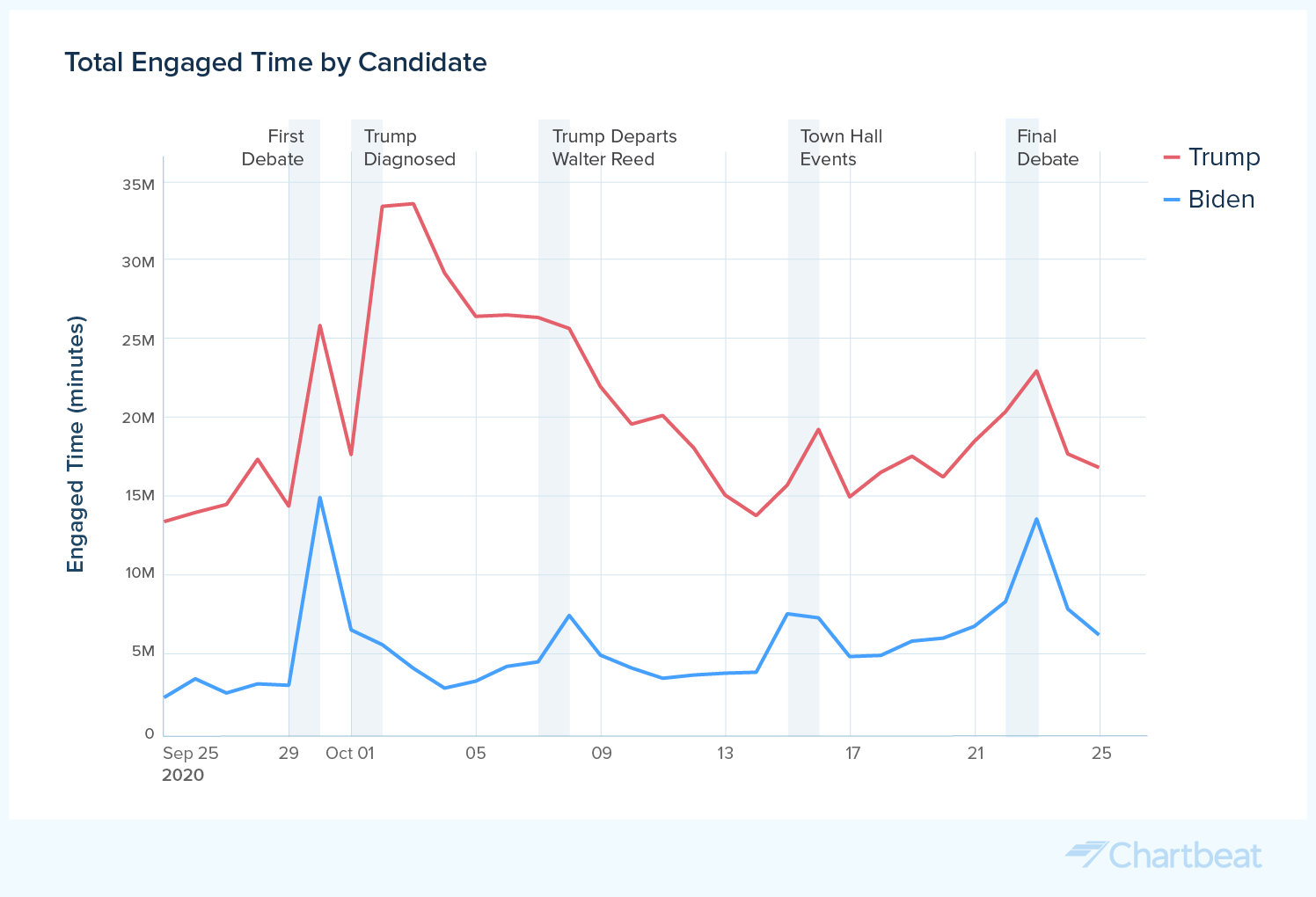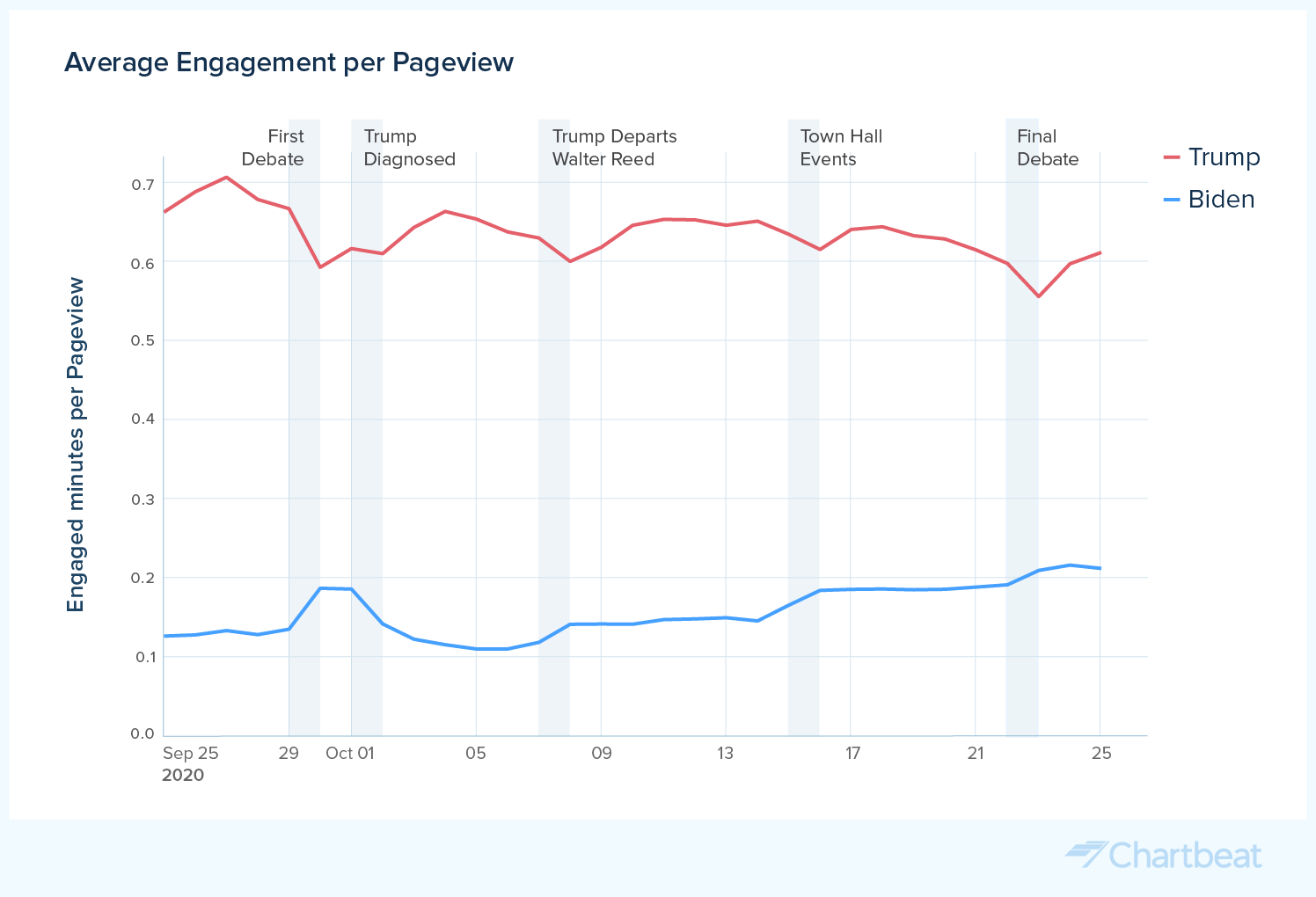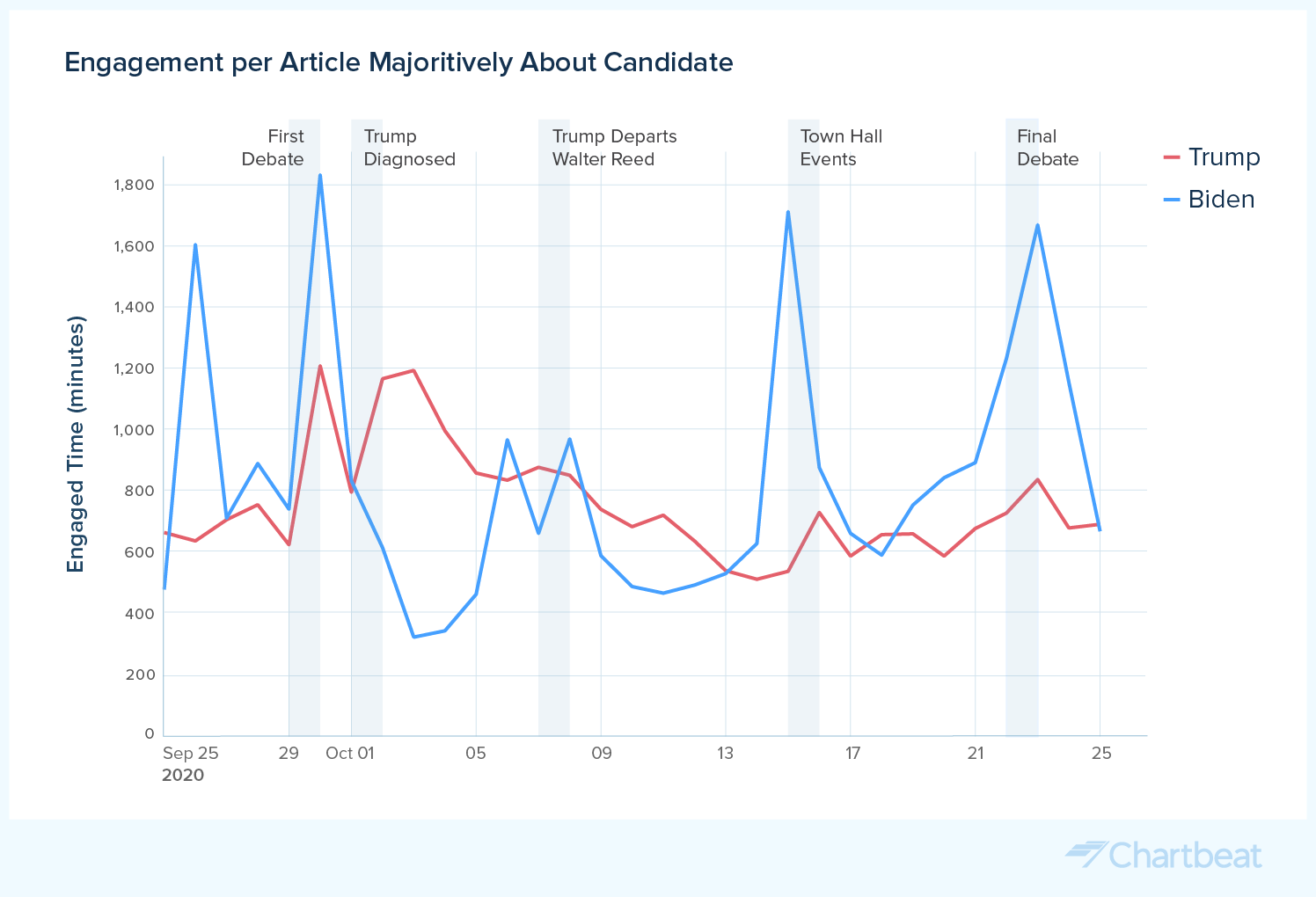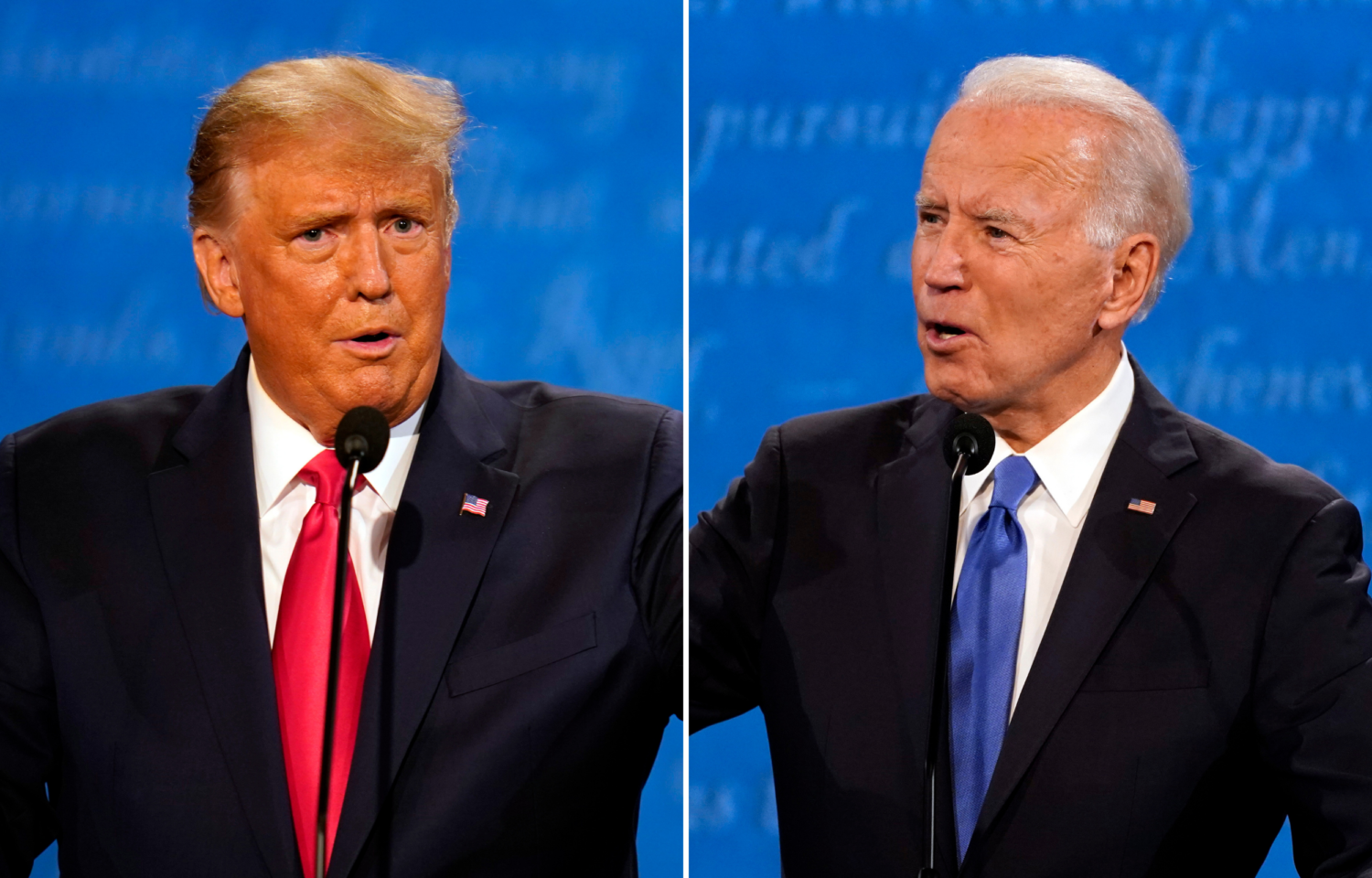A fresh analysis from news metrics vendor Chartbeat shows that President Donald Trump continues to dominate the news cycle over challenger Joe Biden as measured in engaged minutes by readers of digital articles.
By a lot rather than just a little.
Analyzing nearly 600,000 digital stories from client publications from August through the second debate last week, Chartbeat found Trump got 83% of engaged time traffic versus 17% for his rival. Trump never dipped below 67%, and got 12 times the story engagement when he was ill with COVID-19.

(Courtesy: Chartbeat)
The measure raises, but doesn’t answer, an intriguing question. Is any publicity good publicity in the midst of an especially contentious campaign? Or does much of the reading reinforce the passionate, negative views of Trump detractors — a daily dose of can-you-believe-this?
Put another way, is “Trump fatigue” important to the election result if there is no evidence news consumers are tired of reading about him?
Chartbeat data scientists do not have an opinion on that. The test is coming in a week of whether the president can win a landslide of attention and still lose the election — potentially by a wide margin.

(Courtesy: Chartbeat)
Chartbeat also declined to reveal specifics on the mix of sources of the articles. Its client list includes The Washington Post, plus the websites of CNN, BBC, NPR and Fox News, but not The New Yorker, The Wall Street Journal or BuzzFeed. Nor does it measure broadcast attention. I am not inclined to think that makes much difference.
Writing in Chartbeat’s blog, data scientist Jon Wiggins offers a couple of qualifiers: “Contributing factors to these findings could be Biden’s low media profile during this timeframe, along with Trump’s stronger likelihood to be referenced in news considering his global importance across multiple topics.”
The peaks and valleys over time (see graph) are telling. Measuring for a month from late September, interest in both candidates rose before, during and after the debates and dueling town halls. That is when Biden pulled closest to Trump in attention. Conversely, the president’s COVID-19 diagnosis and several days of recovery at Walter Reed Medical Center generated a huge spike.
Biden fared better in a separate measure of how long those who read an article in which he got the majority of attention stayed with it. He surpassed Trump on debate days and some others by that standard. So the president’s wide advantage in the overall measure is more driven by the number of articles than the depth of reading.

(Courtesy: Chartbeat)
Chartbeat’s methodology accounted for stories in which both candidates appeared by determining shares of attention using their names.
One of Chartbeat’s founding principles a decade ago was that engaged time would eventually prove a more important measure than unique visits or pageviews. Its algorithm identifies “active attention,” that is, counting only time actively scrolling through an article as opposed to leaving it open in a browser.
I have written a number of times about Chartbeat’s end-of-the-year ranking of the best-read articles among its client base. Winners in recent years have included three different articles from The Atlantic, The New York Times’ 2016 election coverage and Brian Stelter’s CNN obituary of Anthony Bourdain.







